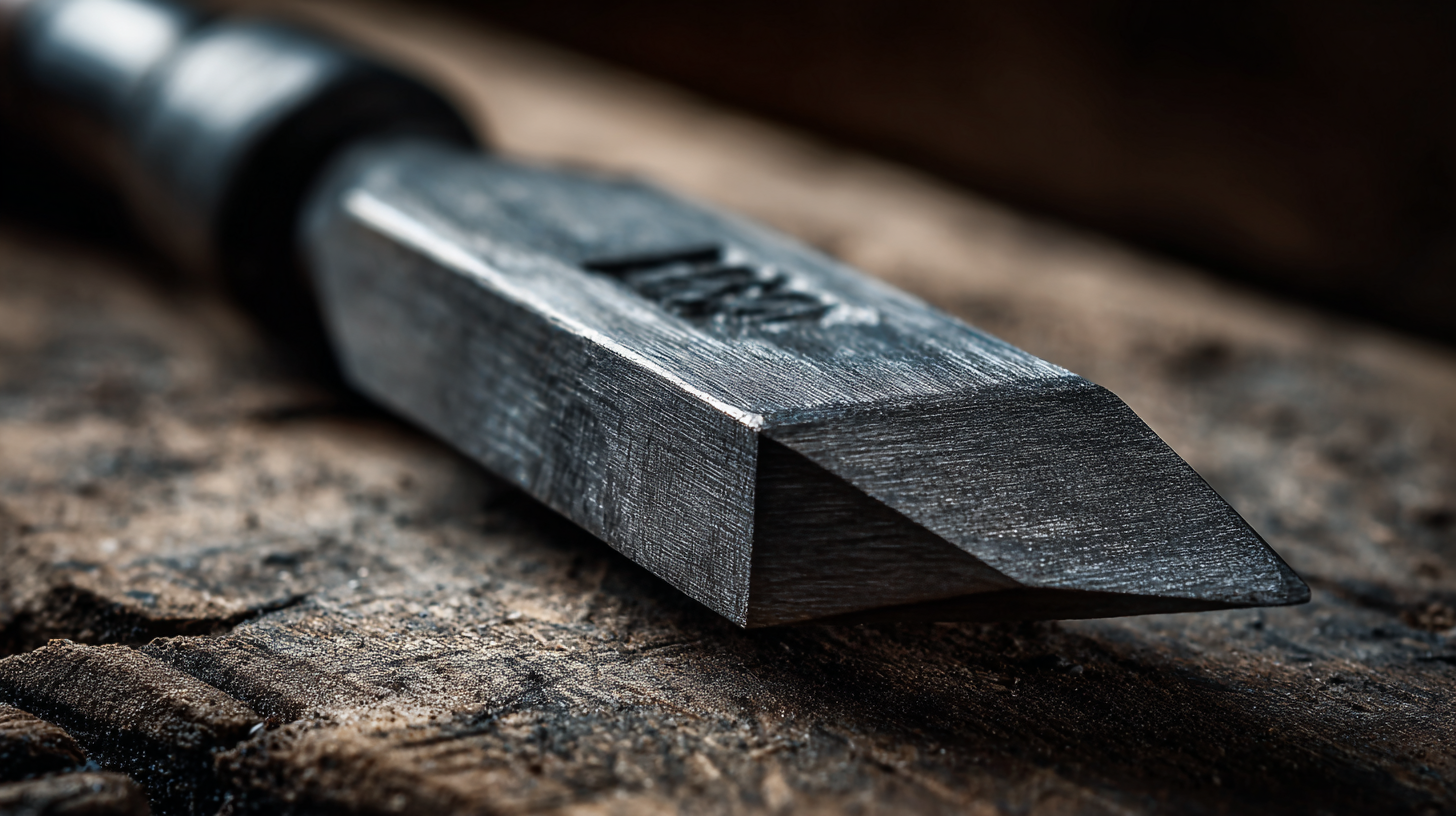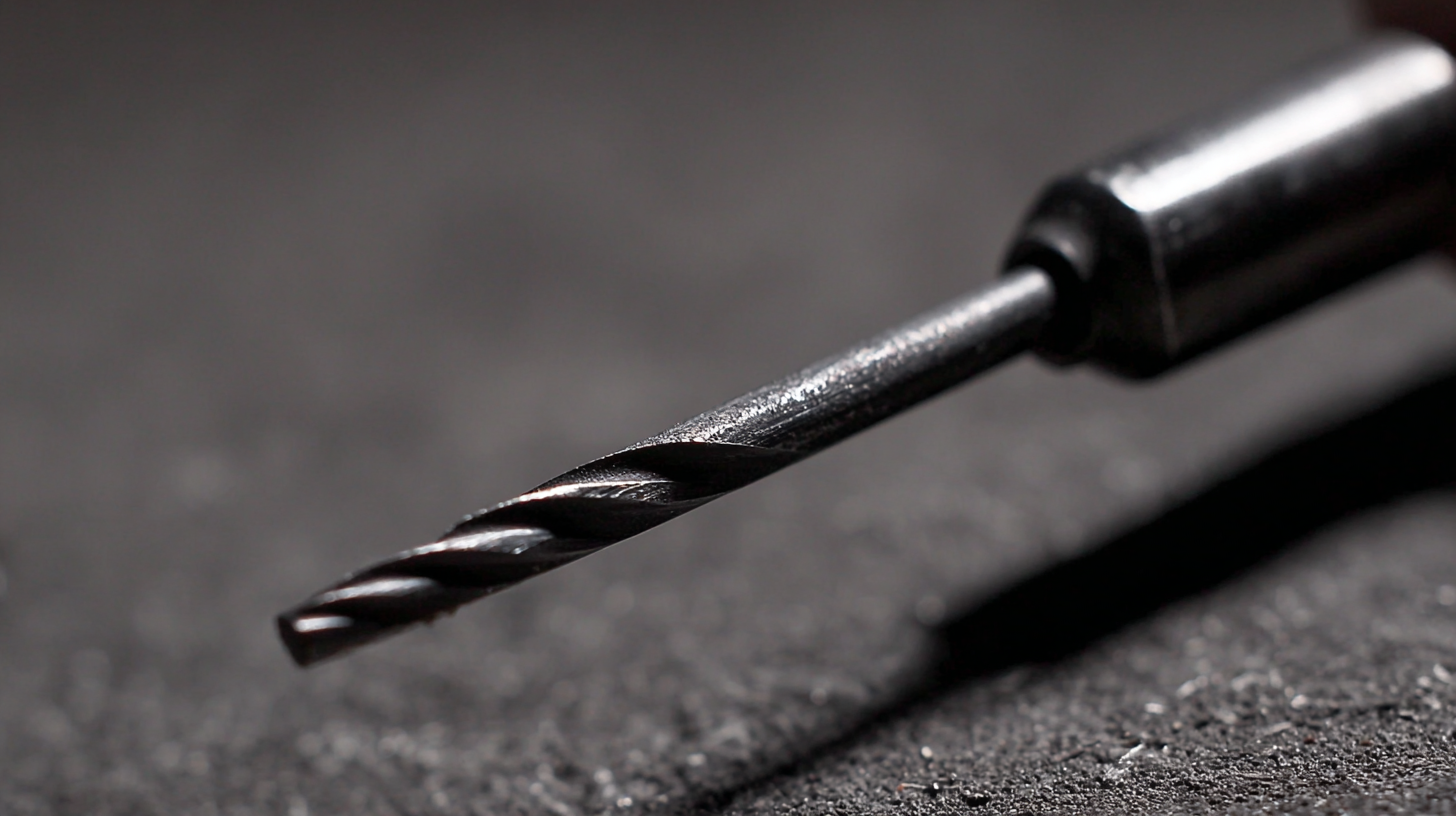In the realm of modern craftsmanship, the steel chisel stands as an indispensable tool that resonates with both traditional and contemporary techniques. As reported by the Craftsmanship Institute, nearly 75% of professional artisans emphasize the importance of precision tools like steel chisels in achieving intricate designs and finishes. This tool not only enhances the level of detail achievable in woodworking, stonework, and metalworking but also significantly reduces the time spent on tasks that require finesse. Additionally, a study by the Global Hand Tools Association indicates that the use of high-quality steel chisels can improve work efficiency by up to 30%, leading to better productivity in artisan workshops. As we explore the essential role of steel chisels in craftsmanship, we will uncover valuable insights into their application, maintenance, and the techniques that elevate their use to an art form.

Steel chisels play a pivotal role in precision craftsmanship, serving as essential tools across various trades including woodworking, stone carving, and metalworking. According to the "2019 Woodworking Tool Market Report," 75% of professional woodworkers identified chisels as vital for achieving intricate designs and fine details in their projects. The durability and edge retention of high-quality steel chisels allow artisans to create with confidence, knowing that their tools can withstand the rigors of demanding tasks.
Moreover, the versatility of steel chisels enhances their importance in modern craftsmanship techniques. Data from the "Craftsmanship Trends Survey 2022" reveals that over 60% of craftsmen prefer steel chisels for their ability to perform multiple functions, from hollowing out materials to precise trimming. The sharpness and responsiveness of these chisels enable craftspeople to execute delicate operations that define high-quality workmanship, elevating the standards within the industry.
As craftsmanship continues to evolve, steel chisels remain a cornerstone, contributing to the precision that today’s artisans strive to achieve in their craft.
When choosing the right steel chisel for your crafting needs, it’s essential to consider several factors that align with your specific projects. Steel chisels are fundamental tools in woodworking, highly regarded for their durability and ability to deliver precision cuts. Look for chisels made from high-quality steel, as they maintain sharp edges longer and withstand the rigors of frequent use. You should also assess the bevel style of the chisel; a straight edge is ideal for general-purpose tasks, while a beveled edge allows for more intricate work.
Additionally, the handle material and design can significantly impact comfort and control during use. Opt for chisels with ergonomic handles that reduce hand fatigue, especially if you plan on working for extended periods. Ultimately, understanding the nuances of different chisels will elevate your craftsmanship and enable you to execute your vision effectively, whether you are just starting or advancing to more complex projects.
 Steel chisels are essential tools in modern craftsmanship, allowing artisans to achieve precision and intricate details in their work. To use steel chisels effectively, one must master a few fundamental techniques. First, it is crucial to choose the right chisel for the task; different chisels serve various purposes, from paring to mortising. They come in various shapes and sizes, each designed to manage specific types of cuts or carvings. Properly identifying the right chisel enhances both efficiency and the quality of the finished product.
Steel chisels are essential tools in modern craftsmanship, allowing artisans to achieve precision and intricate details in their work. To use steel chisels effectively, one must master a few fundamental techniques. First, it is crucial to choose the right chisel for the task; different chisels serve various purposes, from paring to mortising. They come in various shapes and sizes, each designed to manage specific types of cuts or carvings. Properly identifying the right chisel enhances both efficiency and the quality of the finished product.
Once the appropriate chisel is selected, the next step involves mastering grip and angle. A firm grip allows better control while cutting, and the angle at which the chisel is held can significantly influence the outcome. For cleaner cuts, the chisel's edge should be held at a slight angle to the material surface. Additionally, using a mallet to strike the chisel helps drive it into the material more effectively, ensuring deeper cuts with less effort. By practicing these techniques regularly, craftsmen can improve their skills and create more complex, beautiful designs with steel chisels.
Maintaining steel chisels is crucial for ensuring their longevity and optimal performance in modern craftsmanship techniques. Regular maintenance practices, such as cleaning the blade after each use, can prevent rust and corrosion. It is essential to wipe the chisel with an oily rag, especially after working with moist materials, to protect the steel and prolong its life. Beyond cleaning, proper sharpening techniques will keep the chisel efficient and effective in its use. A well-honed edge allows for clean cuts and reduces the risk of damage to both the tool and the material being worked upon.

Additionally, storing steel chisels correctly is vital for maintaining their condition. Keeping them in a dry environment and using a protective case or rack can help prevent accidental nicks and chips. Regular inspection of the chisel handles for wear and tear is also important, as a sturdy handle contributes to better control and precision while working. By incorporating these maintenance strategies, artisans can ensure that their steel chisels not only perform well but also remain reliable tools throughout their crafting journey.
Steel chisels have revolutionized modern artistry, becoming essential tools that enhance precision and creativity in various crafts. According to a recent industry report by the Craftsman's Guild, the use of steel chisels in woodworking and sculpture has increased by over 30% in the past five years, underscoring their growing significance among artisans. Their durability and ability to maintain sharp edges allow artists to create intricate designs, pushing the boundaries of traditional craftsmanship.
Moreover, innovative applications of steel chisels extend beyond conventional mediums. In mixed media art, artists are utilizing these tools to carve through layers of materials, combining wood, metal, and stone in dynamic ways. The American Artisans Association noted a 25% rise in workshops focusing on steel chisel techniques, highlighting the tool's versatility in adapting to contemporary art forms. As artisans embrace modern technology, including CNC machines, the precision achieved with steel chisels remains unparalleled, offering a tactile element that machines cannot replicate. This blend of traditional craftsmanship with innovative applications showcases the steel chisel's vital role in shaping the future of artistry.







